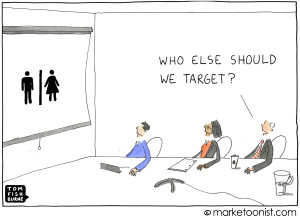The Super Bowl will be soon upon us, and with it comes the biggest advertising day of the year. Brands around the world will spend millions of dollars for the chance to showcase themselves to a massive global audience. Some brands are regulars in this space – advertising during the Super Bowl is just another part of their year – while others hope to use the platform as a launching point to put their brand in the national discussion and boost their overall brand awareness.
Given the high prices for these spots and the highly selective process that comes with Super Bowl advertising, many brands are unable (or unwilling) to try and make the jump to this realm of brands – but just because you aren’t playing on the biggest stage, doesn’t mean you can’t be successful.
This is where the importance of finding your brand niche becomes apparent. Chances are, there’s an audience out there who will connect with your brand. But if the brand strategy is either intentionally or unintentionally oblivious of this audience, their efforts to try and settle outside of their ideal spot on the market will be met with failure. Instead, the strategy should center around becoming the biggest dog on your block – putting in the time and effort to identify to whom your brand will be most relevant and how you can efficiently strategize your branding efforts to speak to this audience.
The first step to any good communications strategy is to understand your audience, and this rule applies to branding as well. The previous “shotgun strategy” mentality of branding, where the goal was to cover the most ground with the hope of some level of success in the randomness has gone away, replaced by the mindset that spending the time/effort/money at the very start to define where the brand should live will give it a step ahead when the rest of the branding process begins.
No longer will branding emulate a meandering excursion across the country, where the start point is known but the final destination only relatively set, and therefore journey itself is largely unplanned. Just the opposite – chart your brand course with the end in mind and work backward, taking in each step in careful consideration to ensure that the trip is as much of a success as the destination.
Two key pieces to a successful brand are the verbal and visual aspects, which include the brand name and logo. Tailoring these to your target audiences are especially crucial, as they serve as the first impression many of those potential consumers will have with your brand.
Speak to your audience with your brand name, providing a unique connection with their wants and needs. For instance, if you are branding a new line of automotive parts, look for names that highlight the specialized interests and knowledge of the target audience – which can also extend to the logo, allowing for both the verbal and visual branding pieces you create a built-in audience.
When you know exactly where your brand should end up and live long-term, who your brand should target will also make itself known. To extend the metaphorical connection, the idea of being a big fish in a small pond scares away many organizations, who pine to move to bigger ponds no matter what the outcome.
What they fail to realize is that a “small” pond in branding doesn’t necessarily mean that they are limiting their ceiling of success. In fact, I interpret the phrase to represent being the biggest and best fish in your specific pond – instead of looking for what’s next, focusing on what’s now and where your brand will have its biggest chance to speak to its true audience.
Image Sources:
https://contentmarketinginstitute.com/2013/03/content-marketing-riches-niches/
https://www.chrisducker.com/profitable-niche-affiliate-marketing/
Addison Whitney is a global branding firm with a passion for building strong brands.
To learn more about Addison Whitney, visit our website at AddisonWhitney.com, or contact us here.
